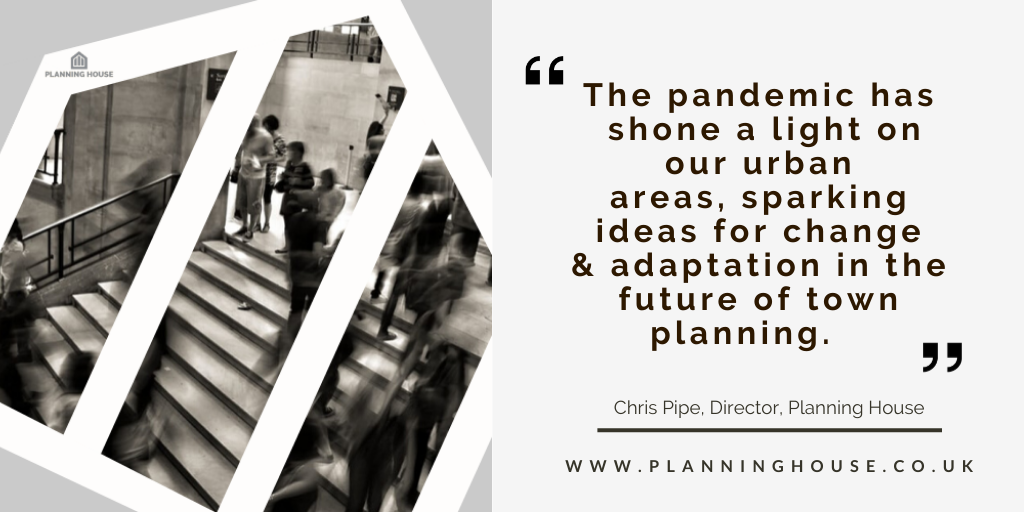Right from the Black Death through to the more recent Ebola epidemics, public health crises have consistently impacted the way we think about the functioning of our towns and cities. Since the COVID-19 outbreak swept through the world like wildfire earlier this year, a much-needed spotlight has been shone on our urban neighbourhoods, leaving one pertinent question – what next?
In the aftermath of the most recent global pandemic, we are likely to see huge changes in the way we think about movement, residence, socialising and consumerism in our towns and cities moving forward.
With population density being key in the fight against the spread of the coronavirus, there will likely be an increased demand for areas allowing for altogether more spaced-out socialisation. And with convenient online shopping being favoured over venturing out into densely packed retail locations, we could well see a decrease in Highstreet stores alongside this implementation of large social spaces.
What’s more, the switch to remote working is likely to lead to an increased demand for locations conducive to work on-the-go; think coffee shops, shared office spaces and cafes.
But won’t remote work disappear once the pandemic ends?
In short, this is unlikely. Although some companies may return completely to their office-based roots, many will retain at least some of their working from home strategies.
Through being forced to adapt and implement new and innovative remote work structures, businesses could well realise that this way of operating is actually much better suited to them.
The decreased need for crowded office spaces could result in even more locations ready to be occupied by the large and well-spaced social hubs of the future.
Of course, it is well argued that densely populated areas are beneficial in terms of energy efficiency, which may lead towards a push for smart and futuristic infrastructure, designed to keep population high but close contact low; a best-of-both-worlds solution to help the environment whilst curbing the spread of infections.
Having said this, with the increased popularity of working from home, town and city residents will no longer be tied to the location of their work’s office. Ultimately, this could result in disaggregation of our urban areas as more and more up and leave in search of the less dense environments.
With a decreased need to be located close to our jobs, the whole definition of sustainable building could radically change going forward. If our jobs are not keeping us tied to one place, what else will keep us there?
To keep urban living appealing, city residence needs to provide more than just a base for ease of commuting.
The pandemic has without a doubt shone a light on our urban areas, highlighting their strengths and weaknesses whilst sparking ideas for change and adaptation in the future of town planning.
And though in these strange times it is difficult to predict exactly how our towns and cities will change in the aftermath of COVID-19, there is one thing for certain – things will change.


